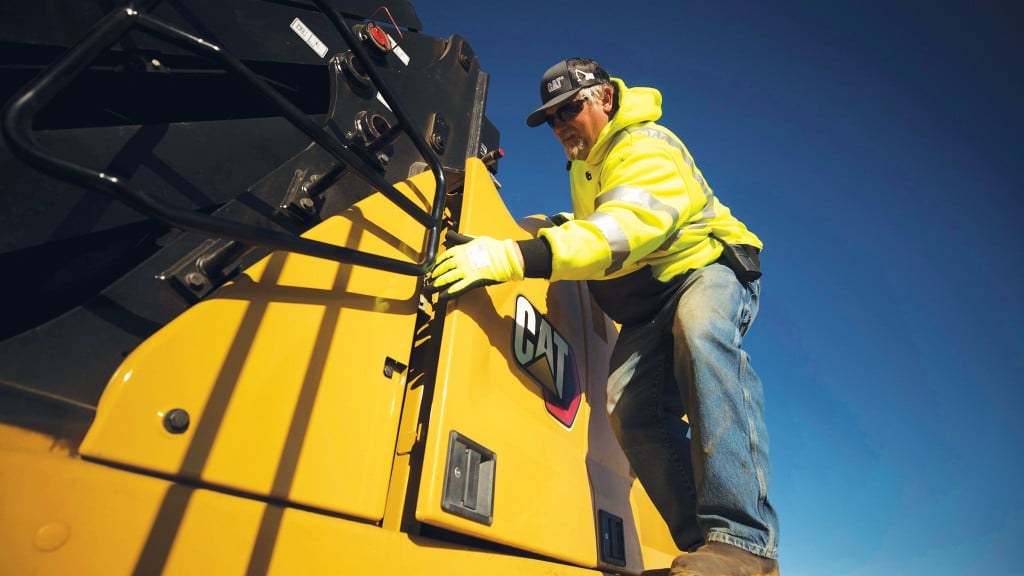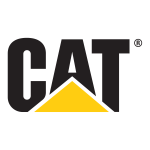Hitchcock Scrap Yard using the newly introduced Caterpillar material handler to take their operation to the next level

If you asked Michael Hitchcock, owner of Hitchcock Scrap Yard Inc., where his company would be roughly 40 years after investing in it, chances are he would have said he had no idea.
"I was just finishing up my service in the Vietnam War, and I knew nothing about the scrap business before I got into it with my grandfather," he says.
In 1974, he purchased his grandfather's business as a three-man operation. Today, it is now an essential business that employs approximately 50 people and ships up to 9,070 tonnes (10,000 tons) of scrap steel per month. As a rural, mid-size scrap business located in Canton, Illinois - population less than 15,000 - they have maintained consistent growth, despite weathering some harsh economic conditions.
The secret to the company's success, according to Hitchcock, is honesty. "Your word and reputation are everything," he says. "We buy quality and treat our customers fairly."
Fuelling the company's early growth was demolition work, which took workers across the U.S. Hitchcock crew members and equipment travelled as far as to Texas, Chicago and Pennsylvania for major demolition projects.
During this time, the company developed a relationship with Caterpillar, buying from and selling scrap to the manufacturer's foundries. It also purchased Cat 245 and 350 series excavators for demo work and Cat 730 haul trucks.
"When Caterpillar came out with their semis, I immediately purchased 11 of them for my business," recalls Hitchcock.
Business evolution
Over the years, Hitchcock's focus has shifted from roaming the country for demolition projects to staying closer the heartland and concentrating on its industrial customers.
"We still do demolition work, but we stay more local, travelling only as far as Peoria, Illinois, for projects," he says.
Instead of hauling equipment around the country, their Cat semi trucks are pulling trailers and roll-off boxes to service hundreds of industrial accounts. The company has amassed 150 trailers and 300 roll-off boxes for its industrial customers.
"We serve a market area ranging from Chicago to St. Louis to the Quad Cities," explains Hitchcock.
The company's primary product intake is industrial ferrous scrap, along with new plate and structural steel. In 2018, they added a nonferrous warehouse that includes a new in-floor conveyor for feeding a new nonferrous baler.
According to Hitchcock, a reputation for honesty, superior service and delivering a quality recycled product to its customers continues to fuel the company's growth.
"We use hand-held analyzers to check the grade of steel, so our customers who want low-magnesium steel are sure to get it." He says much of the yard is also paved to be more welcoming to local customers, without the fear of damaging tires. The pavement also makes it easier for the company's wheeled material handlers to navigate the yard while managing their scrap material.
Early on, the operation used modified 245 and 350 excavators with tracked undercarriages to process material. In the late 1990s their business changed to Cat M325 MH Series machines, specifically designed to increase operational efficiency in scrap applications.
"We fell in love with the M325 material handler," says Hitchcock, "and we didn't think there would be anything that could match it."
Overall, the company's scrap handling strategy includes multiple tracked and wheeled machines, including Cat M325D, 322C and 318 Series machines, plus 345 Series models equipped with the latest Caterpillar hydraulic shear. Mainly stationary, the tracked models shear and load material into the site's two stationary shear and baler machines. Loading and offloading trucks and roll-off boxes, the wheeled units are constantly on the move.
Taking the next step with the new CAT material handler
Press Hitchcock to single out the most vital piece of equipment to his scrap operation, and he will tell you it's the material handler.
"If one of those machines are down, then that part of the operation is down until the machine is back running," he says.
After Hitchcock learned of the new Cat MH3040 being introduced, he wanted to put the machine to work.
"We were disappointed by the decision to end production of the M325 but were excited to hear of its replacement," he says.
The first thing their operators noticed was the size of the new Cat material handler.
"The MH3040 weighs about 3,270 kg (7,200 pounds) more than the M325D L MH, which helps to add stability," explains Matt Santee, product application specialist for Caterpillar. "Customers often think they need a track machine for stability, but this is not the case."
Tom Allison, operator at Hitchcock Scrap Yard Inc., adds, "I can pick something up, put it in front of me and drive it around without any tipping whatsoever. It's very secure and steady."
The new MH3040 keeps the same boom and stick arrangement, as well as the same undercarriage as the M325D LMH, to offer up to a 15.5-m (50.8-foot) reach. "We have added thick, multiplate fabrications, castings and forgings to the boom, stick and other high-stress areas to increase machine durability," says Santee.
The MH3040 uses a 151-kW (202-hp), U.S. EPA Tier 4 Final Cat C7.1 engine plus Smart Mode operation, to match engine and hydraulic power to working conditions, improving fuel efficiency. Roughly 80 percent of the handler's operating costs are attributed to fuel, and Hitchcock reports working under load the M325s went through 300-340 litres (80-90 gallons) of fuel per day.
"With the new MH3040, I can run it for two days and still have about a quarter tank left over," says Allison.
Hitchcock adds, "We are calculating about a 40 percent fuel savings in our application, which is a huge savings. But the key is we are not giving up anything to get the fuel efficiency. It still gives us the same power and the stability is better."
The company is also getting a 12 percent increase in swing speed to help with truck loading efficiency. "We receive about 40 inbound trucks from our industrial customers and load 25-30 semis per day outbound. We set the outbound truck on one of our two scales and load it with 36,290 kg (80,000 pounds) of material in 10 minutes," explains Hitchcock.
Equally as important as fast cycle times is the need to quickly get around their 9.7-hectare (24-acre) yard, to move, stack and sort material.
"The MH3040's wheeled undercarriage gives the advantage of travelling around the yard at up to 18 km/h (11.2 mph)," comments Santee.
Hitchcock adds, "One amazing stat is we haven't had to replace a wheel on any of our handlers."
Cab comforts
The MH3040 material handler is built on the Next Gen excavator concept which includes a sound-suppressed cab that offers more room for the operator. Plus, new joystick controls, ergonomically located within easy reach to reduce fatigue, eliminates the centre steering column to improve visibility and legroom.
"Sitting in the cab is very comfortable, and you have lots of arm room. No steering wheel makes it great because you have all that legroom," offers Allison.
Also new to the cab design is a large, 254-mm (10-inch) high-resolution touchscreen monitor for machine control and monitoring the standard camera feeds.
"You just touch what you want on the touchscreen, and you can program the joysticks according to what settings are best for you," says Allison. "The cameras are the bomb. It makes it very visible to see people, machines, vehicles or whatever it may be."
Regular maintenance leads to longevity
According to Hitchcock, machines come to their scrapyard to work but never retire. The company takes pride in their equipment and keeps it operating in peak condition, employs four service technicians plus welders and follows a stringent proactive service routine.
"We will pull an engine and drop in a new one at 12,000 hours," he says. "One of our wheeled material handlers now has over 40,000 hours on it. We are getting quality with our Cat material handlers."
The new MH3040 design is meant to help service techs by simplifying maintenance. Electro-hydraulic controls eliminate pilot lines and filters, reducing the number of hoses and fittings. Synchronized 1,000-hour fuel filter change intervals, along with a new air intake filter, with a pre-cleaner lasting 1,000 hours, decrease maintenance requirements. Plus, a new hydraulic oil filter improves filtration while offering a 50 percent longer service life than the M325D LMH filter.
"Customers will realize up to 20 percent lower maintenance costs with the MH3040," says Santee.
In addition, a new right-hand service platform makes it easy and safe to access the upper service area. One other critical component to fleet management is conducting regular fluid analysis. The MH3040 S∙O∙S ports are easily accessed for quick fluid extraction for analysis.
"We don't have a lot of issues with the machines, but for oil analysis and when we get into an area where we are not familiar, Altorfer is quick to respond," comments Hitchcock, in reference to their local dealer.
The combination of lower fuel consumption, reduced maintenance costs and additional power have definitely made Hitchcock a fan of the new MH3040.
"It's hard to believe that Caterpillar has made something that is smoother and faster than the M325D MHs. This is truly a sweet machine," he says.
Rick Zettler is a technical writer based
in Iowa.
This article was originally published in the July/August edition of Recycling Product News, Volume 28, Number 5.



